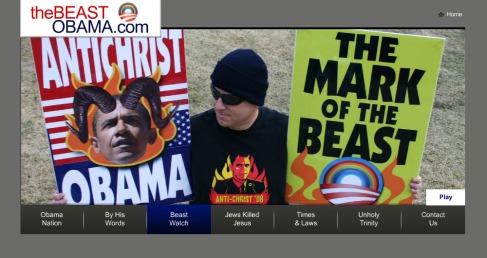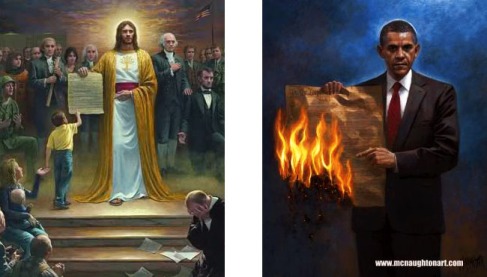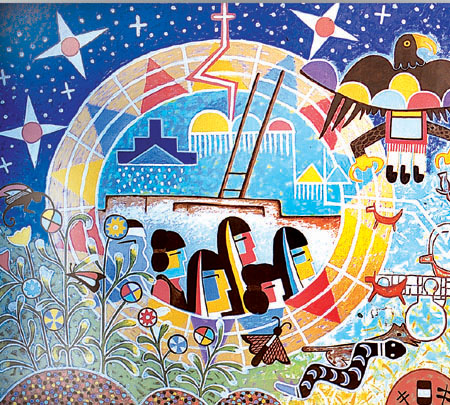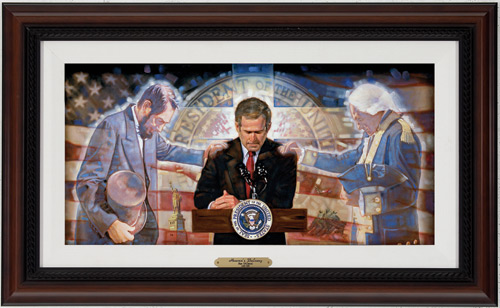A few days ago, I gave a public lecture on “Religious Controversies in the 2012 Presidential Race,” surveying various religion-related claims that have been used to create negative impressions of Romney, Obama, Ryan, and Biden. One highlight I thought I would share here is that both Romney and Obama have been linked to a Christian symbol of ultimate evil: Romney as Satan, Obama as the Antichrist. These are fringe claims (in my presentation, I surveyed claims from mainline news and commentary as well), but they reveal the ferocity with which each candidate is regarded by some extremely conservative Christians.
Romney is, in effect, Satan, if you believe Florida evangelist Bill Keller. Keller achieved national prominence during the 2008 election cycle thanks to a Salon article on evangelical opposition to Romney, which took its headline from Keller’s provocative slogan that “A vote for Romney is a vote for Satan.” Keller now runs a website with that title. Keller’s opposition to Romney is basically apolitical. It’s not that he’s gunning for another candidate; Keller may well be a political quietist. He just wants to win souls to Jesus, and he’s worried that Romney–or worse for Keller, Romney’s evangelical endorsers–will give the impression that Mormonism is authentically Christian, not the diabolical fraud that Keller insists it is.

Meanwhile, the Westboro Baptist Church, creators of the famous godhatesfags.com, have created a website declaring Obama to be the Antichrist and the Beast of the Apocalypse: beastobama.com. They had less biblical prooftexting to support their assertion than I had expected. Basically, their rationale for identifying Obama as the Antichrist/Beast, at least as they explain it on the website, is that his stepfather raised him a Muslim, and he supports same-sex marriage (making him, in the WBC’s parlance, a “fag-enabler”).

In a twist that I suspect some observers will find ironic (I’m not so interested in applying the label myself), Mormon artist Jon McNaughton has created a painting that portrays Obama as a kind of anti-Christ. McNaughton has gained some national notoriety for his propagandistic paintings reflecting Tea Party sensibilities; his most well-known work, One Nation under God, depicts Jesus holding aloft the U.S. Constitution as if it were a sacred text. More recently, McNaughton has produced a painting, One Nation under Socialism, that shows Obama holding the Constitution aloft in the same pose that Jesus used in One Nation under God–but Obama is burning the Constitution. The identical pose, I’m arguing, casts Obama as an anti-Christ figure. (The mutually referential titles of the paintings reinforce that interpretation.)

BTW, I can’t say for sure since I can’t vouch for how accurately the online scan I found reproduces the colors of the original painting, but it looks like McNaughton may have painted Obama’s skin as darker that it actually is.
















